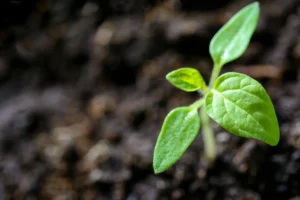What is Nitrogen Fertilizer and Why is it Important?
Nitrogen fertilizer is a key component of modern agriculture, and it plays a vital role in helping farmers grow crops that feed a growing world population. However, despite its importance, many people don’t fully understand what nitrogen fertilizer is, how it works, and why it’s so essential. In this post, we aim to demystify nitrogen fertilizer by walking you through everything you need to know about this key agricultural input. From the science behind nitrogen fixation to the various types of nitrogen fertilizer available to farmers, we’ll cover it all. By the end of this post, you’ll have a solid understanding of why nitrogen fertilizer is so important to modern agriculture and how it helps farmers grow the food we all rely on.
1. Introduction: The Role of Nitrogen Fertilizer in Agriculture
Nitrogen fertilizer is essential in modern agriculture, boosting crop productivity and ensuring food security. It’s a crucial macronutrient for healthy plant growth, vital for leaves, stems, and roots.
While nitrogen is abundant in the atmosphere, plants can’t use it directly. Nitrogen fertilizer fills this gap, providing plants with the nitrogen they need for thriving growth and abundant harvests.
Nitrogen is pivotal for proteins, enzymes, and chlorophyll, crucial for photosynthesis. Without enough nitrogen, plants can’t efficiently convert sunlight into energy for growth.
Additionally, nitrogen is vital for DNA, RNA, and amino acids, fundamental for plant reproduction and overall health.
In agriculture, nitrogen fertilizer supplements natural soil nitrogen, ensuring optimal plant growth and yield. This is particularly crucial in intensive farming to meet global food demand.
However, it’s vital to balance nitrogen fertilizer use. Excessive use can harm the environment, causing nitrogen runoff and water pollution, leading to eutrophication.
Understanding nitrogen fertilizer’s role is crucial for maximizing crop productivity and promoting sustainable farming. Responsible use can enhance yields while minimizing environmental harm, fostering a sustainable agricultural sector.
2. The Importance of Nitrogen for Plant Growth and Development
Nitrogen is indispensable for plant growth and development, vital for amino acids, proteins, and chlorophyll. As a key macronutrient, it’s crucial for agriculture, required in large amounts.
Its primary role lies in promoting lush foliage and sturdy stems, vital for efficient photosynthesis and overall plant health. Nitrogen also aids in enzyme and hormone formation, regulating plant growth.
Moreover, nitrogen directly impacts crop yield and quality by boosting carbohydrate production, essential for energy transfer. Optimal nitrogen levels can significantly enhance agricultural output.
Additionally, nitrogen is pivotal for DNA, RNA, and genetic material synthesis, ensuring proper hereditary transmission and cell division. Ample nitrogen supply supports healthier plants with enhanced disease resistance.
However, maintaining nitrogen balance is critical. Excessive nitrogen can lead to rapid but weak growth, increasing plant susceptibility to diseases and pests. Conversely, insufficient nitrogen causes stunted growth and leaf yellowing, reducing productivity.
Farmers must carefully manage nitrogen fertilizer, considering soil conditions, crop needs, and environmental sustainability. Understanding nitrogen’s importance empowers informed fertilizer application decisions, optimizing productivity while mitigating negative impacts.
3. The Nitrogen Cycle: How Nitrogen is Naturally Cycled in the Environment
The nitrogen cycle maintains nutrient balance, crucial for ecosystems. It involves converting atmospheric nitrogen into plant-absorbable forms through fixation by bacteria.
Fixation, primarily by nitrogen-fixing bacteria, converts atmospheric nitrogen into forms like ammonium or nitrate, essential for plant growth.
Plants uptake fixed nitrogen for growth. However, not all plants can fix nitrogen, necessitating external nitrogen sources like fertilizer, vital for high-yield crops.
After plant absorption, nitrogen undergoes metabolic processes, eventually returning to the environment through leaching, volatilization, or denitrification, recycling it for other organisms.
Soil microorganisms, such as nitrifying and denitrifying bacteria, drive nitrogen transformations, converting ammonium to nitrate and nitrate back to nitrogen gas, completing the cycle.
Understanding the nitrogen cycle is crucial for optimizing fertilizer use, minimizing environmental impact, and enhancing crop productivity.
In summary, the nitrogen cycle regulates nitrogen availability, highlighting the importance of nitrogen fertilizer in agriculture. It sustains food production and ecosystem health, emphasizing the significance of fertilizer in preserving our environment.
4. Common Nitrogen Deficiency Symptoms in Plants
Nitrogen is indispensable for plant health, and its deficiency can severely impact growth and productivity. Recognizing the signs of nitrogen deficiency empowers farmers and gardeners to take corrective action for optimal plant development.
Stunted growth is a prominent indicator of nitrogen deficiency, manifesting as shorter stems, smaller leaves, and overall diminished plant size. Additionally, affected plants may exhibit chlorosis, appearing pale or yellowish, especially in older leaves, starting from the leaf tips and spreading inward.
Another consequence of nitrogen deficiency is reduced leaf and fruit production. Nitrogen is crucial for chlorophyll production and photosynthesis, so inadequate levels lead to fewer leaves and diminished leaf area. This reduction in photosynthetic capacity results in lower fruit yield and quality.
Moreover, nitrogen-deficient plants may experience delayed flowering and fruiting due to insufficient nitrogen for protein and enzyme formation crucial for reproductive processes.
Symptoms of nitrogen deficiency vary across plant species, necessitating regular observation and monitoring. Soil tests and leaf tissue analysis provide valuable insights into nutrient status, guiding appropriate fertilizer application.
Addressing nitrogen deficiency involves providing plants with balanced nitrogen through fertilizers like ammonium nitrate or urea, following recommended rates and timing. Incorporating organic matter into the soil enhances nitrogen availability sustainably.
By recognizing nitrogen deficiency symptoms and promptly addressing them, farmers and gardeners can ensure robust crop health, leading to increased agricultural productivity and sustainable food production.
5. Different Types of Nitrogen Fertilizers and their Characteristics
Different nitrogen fertilizers offer various benefits for agricultural applications, catering to diverse crop needs and soil conditions. Familiarizing oneself with these options enables farmers to make informed choices to enhance crop growth and yield.
- Ammonium Nitrate: Highly soluble and swiftly releasing nitrogen, ideal for crops needing immediate nitrogen boost, like leafy greens and vegetables. Its high nitrogen content enhances crop yield efficiently.
- Urea: With abundant nitrogen and slow-release properties, urea is suitable for crops with longer growth cycles such as corn and wheat. Cost-effective and easy to handle, it’s a farmer-favorite.
- Ammonium Sulfate: Combining nitrogen and sulfur, it’s beneficial for alkaline soils, aiding in pH reduction and nutrient absorption. Ideal for crops requiring both nitrogen and sulfur, like legumes and oilseed crops.
- Nitrogen Solutions: Concentrated forms like liquid ammonia or ammonium hydroxide are used in large-scale farming, offering rapid nitrogen supply via soil application or irrigation systems, fostering swift crop growth.
- Organic Nitrogen Fertilizers: Derived from natural sources like compost or animal manure, these fertilizers gradually release nitrogen, fostering sustainable practices and improving soil health.
Selecting the right nitrogen fertilizer based on crop requirements, soil conditions, and farming practices is pivotal for efficient nutrient management and sustainable agriculture.
6. Best Practices for Applying Nitrogen Fertilizer
To optimize the effectiveness of nitrogen fertilizer while minimizing environmental harm, adhering to best practices is crucial in agricultural settings:
- Soil Testing: Conduct thorough soil tests to gauge nutrient levels before application, preventing overuse and potential pollution.
- Timing: Apply nitrogen fertilizer at the appropriate stage of crop growth to ensure optimal uptake and utilization.
- Split Applications: Divide nitrogen fertilizer applications throughout the growing season to maintain a consistent supply for crops and reduce nutrient loss.
- Proper Placement: Strategically place fertilizer near the root zone for row crops or distribute evenly for perennial crops to maximize uptake efficiency.
- Use Nitrogen Stabilizers: Incorporate nitrogen stabilizers to slow down nitrogen conversion, minimizing loss and enhancing efficiency.
- Monitor and Adjust: Regularly monitor soil nutrient levels and crop health, adjusting fertilizer rates as needed to optimize uptake and prevent excess or deficiency.
By following these guidelines, farmers can harness the benefits of nitrogen fertilizer while safeguarding the environment and promoting sustainable agricultural practices.
7. The Environmental Impact of Nitrogen Fertilizer Use
The widespread use of nitrogen fertilizer in agriculture has undoubtedly revolutionized food production, but it’s crucial to recognize and address its environmental impacts.
One concern is nitrogen pollution, where excess fertilizer leaches into water bodies, contaminating drinking water and disrupting aquatic ecosystems. This contributes to eutrophication, fostering algal blooms that deplete oxygen and create dead zones.
Nitrogen fertilizer also contributes to greenhouse gas emissions, as denitrification releases nitrous oxide, a potent greenhouse gas. To mitigate these impacts, sustainable practices like precision agriculture and cover cropping should be adopted to optimize fertilizer use and reduce reliance on synthetics.
By balancing productivity with environmental stewardship, farmers can ensure a sustainable future for agriculture.
8. Innovations in Nitrogen Fertilizer Technology
In recent years, there have been exciting advancements in nitrogen fertilizer technology, transforming agriculture by addressing key challenges and enhancing efficiency.
One significant innovation is the development of slow-release nitrogen fertilizers. These formulations gradually release nitrogen over time, ensuring sustained nutrient availability to plants while minimizing leaching and runoff, thus reducing environmental impact.
Another breakthrough is the use of coated or encapsulated fertilizers. These coatings protect nitrogen granules, enhancing nutrient uptake by preventing reactions with soil and reducing volatilization. They can also be customized for specific environmental conditions, optimizing nutrient release throughout the crop’s growth cycle.
Precision agriculture technologies have also advanced, enabling farmers to apply nitrogen fertilizers with greater accuracy. By utilizing satellite imagery, drones, and soil sensors, farmers can precisely assess crop nutrient needs, leading to targeted fertilizer applications and improved yields.
Research into nitrogen-fixing crops and biological fixation methods is ongoing, aiming to reduce reliance on synthetic fertilizers. These approaches harness natural processes to enhance nitrogen availability, potentially revolutionizing sustainable agriculture and mitigating greenhouse gas emissions.
Overall, these advancements offer more sustainable and efficient ways to provide crops with essential nutrients while minimizing environmental impact. Embracing these technologies, farmers can contribute to a more productive and sustainable agricultural system that meets global food demand while preserving natural resources.
9. Balancing Nitrogen Fertilizer Use with Sustainable Agriculture Practices
Achieving a balance between nitrogen fertilizer use and sustainable agricultural practices is essential for preserving the long-term health and productivity of farming systems. While nitrogen is critical for plant growth, its overuse can harm the environment through water pollution, greenhouse gas emissions, and soil degradation.
Precision agriculture offers a solution by leveraging technology and data to optimize fertilizer application. Sensors, satellite imagery, and soil testing enable farmers to accurately assess crop nitrogen needs, reducing waste and maximizing efficiency.
Incorporating organic fertilizers and nutrient management strategies is another sustainable approach. Materials like compost and manure not only supply nitrogen but also enhance soil structure and foster beneficial microorganisms. Cover cropping and crop rotation can naturally fix nitrogen, lessening the dependence on synthetic fertilizers.
Conservation practices such as no-till farming and integrated pest management further diminish the need for nitrogen inputs. No-till farming prevents soil erosion, boosts organic matter, and enhances water infiltration, promoting nutrient cycling and minimizing nitrogen loss. Integrated pest management reduces the necessity for excess fertilizer by prioritizing pest prevention and biological control.
By embracing these sustainable methods, farmers can judiciously utilize nitrogen fertilizer, mitigating its adverse environmental effects while maintaining agricultural productivity. Striving for equilibrium between nitrogen usage and sustainable agriculture practices ensures a resilient and healthy farming system, benefiting both present and future generations.
10. Conclusion: The Crucial Role of Nitrogen Fertilizer in Ensuring Food Security
In conclusion, nitrogen fertilizer is vital for food security, boosting crop yields to meet rising global food demands. It fosters robust plant growth, addressing soil nutrient deficiencies crucial for optimal crop development. However, its careful use is essential to minimize environmental harm. By understanding nitrogen’s importance and employing responsible practices, we can ensure sustainable agriculture for future generations.
We hope this blog post has clarified nitrogen fertilizer’s role in agriculture, highlighting its significance in crop production. Understanding its importance is key for farmers and agricultural professionals striving for sustainability. As you explore agriculture further, delve into the complexities of nitrogen fertilizers and their impact on crop productivity.
——————————

